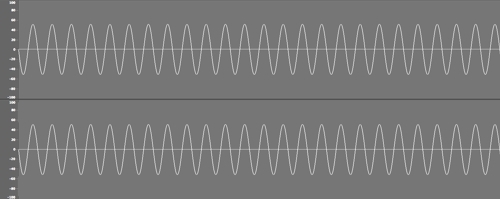

While some studies have found evidence that BBs lead to entrainment of the brain to audio (Batra et al., 1986 Crespo et al., 2013 Gao et al., 2014 López-Caballero & Escera, 2017 Reedijk et al., 2013 Vernon et al., 2014), this has not been a consistent finding (López-Caballero & Escera, 2017 Shekar et al., 2018 Wahbeh et al., 2007). The mechanism by which BBs may induce their effect on brain state is still under debate. Therefore, since different encephalographic ranges correspond to different cognitive functions, it is hypothesised that BBs can elicit different effects according to the beat frequency that would determine the encephalographic range to be modulated, or ‘entrained’. This effect is known as brainwave entrainment (Huang & Charyton, 2008 Karino et al., 2004 Schwarz & Taylor, 2005). This frequency difference, or beat rate, seems to have the largest impact on the type of effect elicited by the BB.Īccording to one theory supported by several studies that measured electroencephalographic (EEG) activity in response to BBs, the effect occurs through the synchronisation of the frequency of neural oscillations with the frequency of the auditory beat, thus changing the relative power of different EEG frequency ranges (Karino et al., 2004, 2006 Orozco Perez et al., 2020).

The BB rate refers to the frequency of the unified BB percept, as determined by the degree of frequency difference between the two tones. This process of sound unification is known in psychoacoustics as binaural integration and is an essential component of sound localisation (Lentz et al., 2014).īinaural beats can differ in terms of carrier frequency, beat rate, the volume of the carrier tones, and whether or not there are additional (non-binaural) tones presented, all of which affect the perceived salience of the beat (Grose et al., 2012). This results in a third, unified percept in the form of a ‘beat’, formed from the interference pattern between the two tones and arising entirely within the experiencer's mind (Oster, 1973 Wernick & Starr, 1968). A small number of scientific studies of BBs have attempted to assess the validity of these claims with mixed results and inconsistent methodologies (Garcia-Argibay et al., 2019).īBs are a psychophysiological effect which arises when tones with differing frequencies are presented independently to each ear. Alternative medicine practitioners have been promoting ‘binaural beat therapy’ with a range of claimed benefits, going beyond cognitive enhancement to include reduction in stress and anxiety, enhanced meditative states, and even analgesia (Smith, 2019). The phenomenon of “binaural beats” (BBs) has gained interest in popular culture recently as a potential method of non-invasive brain stimulation. Our findings do not provide evidence for improvement in attention with gamma BB. We found no effect of BB on self-rated measures of anxiety. We found no significant differences in Reaction Time (RT), Error Rate (ER), or the efficacy of the Attention Networks (AN) between the experimental and control conditions (p > 0.05). Performance on the ANT task (reaction time and error rates) between BB and control groups was evaluated using Wilcoxon signed-rank tests. All completed a rating scale for levels of anxiety before and after each exposure. Here, we investigated the effect of gamma (40-Hz) BBs on attention using the attention network test (ANT), a previously unused task that assesses three subtypes of attention: Alerting, Orienting, and Executive Control.įifty-eight healthy adults performed the ANT remotely under the exposure of 340-Hz BBs and a 380-Hz control tone. Previous research has implicated the role of BBs through brainwave entrainment in potentially giving rise to benefits ranging from enhanced memory and attention to reduced anxiety and stress. Binaural beats (BB) are an auditory phenomenon produced from a combination of two sine waves with slightly different frequencies presented to each ear.


 0 kommentar(er)
0 kommentar(er)
